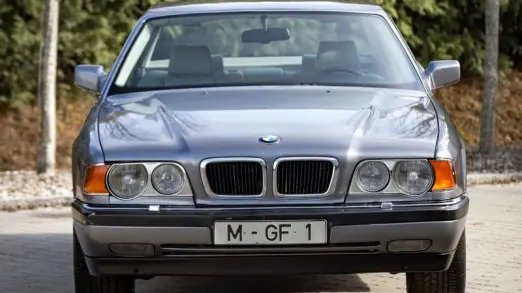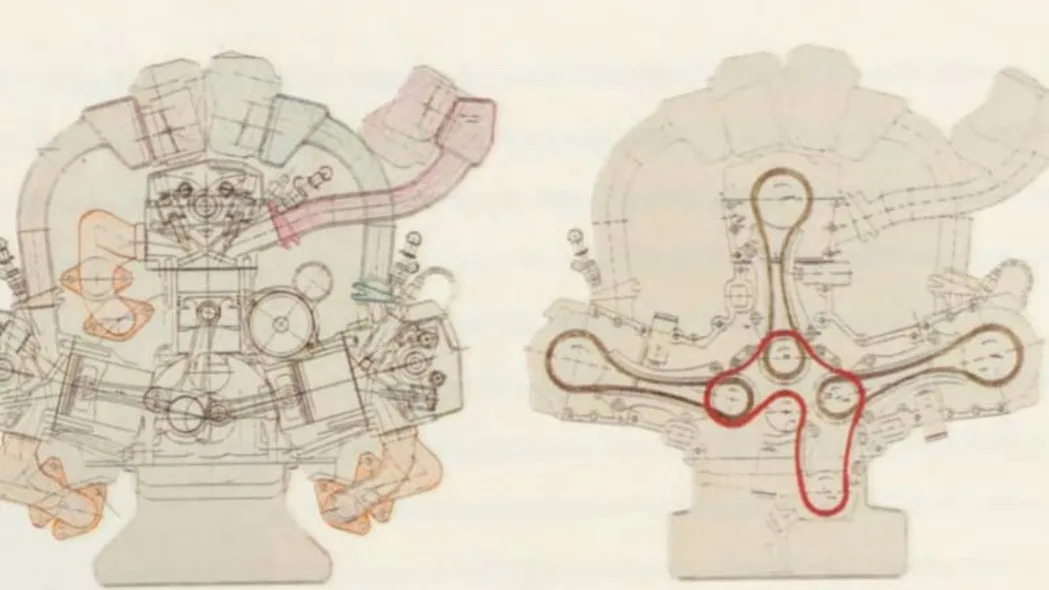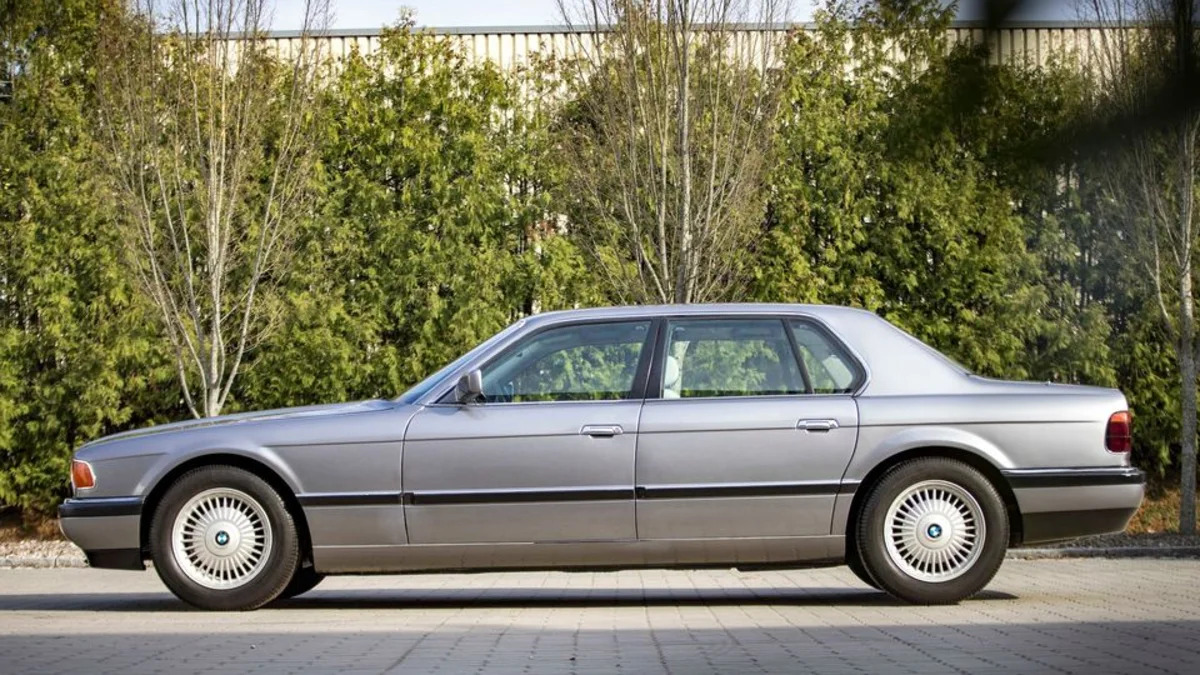If we're talking about production cars, the 16-cylinder club is a small one. Cadillac sold the V-16 between 1930 and 1940, Cizeta began production of the V16T in 1993 and built around 13 units, and all of Bugatti's 21st-century cars have used a W16. The brand has a new V16 engine on the way, too. BMW could have joined this list: it spent years developing V16s that it tested in two generations of the 7 Series.
We've known about the E32-based V16-powered Goldfish for decades, but BMW just cast light on a newer prototype related to the E38-generation 7 Series sold from 1994 to 2001. The test mule wasn't made for the auto show circuit. It was largely kept hidden from view, and it made its public debut at the 2024 edition of the annual Techno-Classica classic-car show in Essen, Germany, 34 years after it was built.
The most fascinating part of this long-wheelbase sedan is under the hood. It's powered by a 6,646-cubic-centimeter (6.6-liter) V16 tuned to develop 348 horsepower at 5,000 rpm. The engine is mounted longitudinally, it spins the rear wheels via a five-speed automatic transmission, and it sends the 750iL to a top speed of 155 mph. These numbers might not sound impressive in an era when Mercedes-AMG wrings 416 horsepower from a 2.0-liter turbo-four and Volkswagen builds a 315-horsepower Golf capable of reaching 155 mph, but keep in mind the prototype was built in 1990. The most powerful engine you could get in a 7 Series that year was a 296-horsepower 5.0-liter V12.


And yet, the second prototype was down on power compared to the first. It sounds like the engine was revised: the Goldfish used a 6,651-cubic-centimeter (6.7-liter) V16 rated at 408 horsepower and its top speed checked in at 175 mph. As a trade-off, the second prototype was developed with this massive drivetrain (the V16 was about a foot longer than the V12!) in mind from the get-go so it wore a more congruous design. One major hurdle engineers faced the first time around is that the two radiators that cooled the V16 didn't fit in the engine bay. They were moved to the trunk, and channeling cooling air required cutting a hole into each quarter panel and covering it with a fiberglass scoop.
That's not to say the 1990 prototype looked like a regular-production 7 Series. It was built four years before the E38 entered production, and it stood out from the standard model in several key ways. Up front, it wore sealed-beam headlights with bright bezels that gave it an old-school look. It used older-style exterior door handles, and its c-pillar was more upright. It's unclear whether BMW designed the car this way to set it apart from the less powerful variants of the then-upcoming E38 or if the exterior design simply wasn't locked in at the time. However, the brand notes that the project aimed to explore what a sedan positioned above the 7 could look like and featured an aluminum body.
We haven't seen the prototype's full interior yet, but the only picture released by BMW shows one of the must-have options of the 1990s: a car phone. It looks like it's integrated into the rear armrest, which suggests the cabin was designed with a focus on the rear-seat passengers. The folks sitting in the back also benefited from leather upholstery, power-adjustable seats bolsters, and their own controls for the radio.
It goes without saying that BMW canned the project. It never released a sedan positioned above the 7 Series, and it never released a car powered by a V16 engine. That's unlikely to change soon: a new flagship — like the 9 Series outlined by nebulous rumors years ago — would plant its stake on territory occupied by Rolls-Royce, which BMW owns, and the current-generation 7 isn't even available with a V12.
Meanwhile, in Stuttgart ...

As a small consolation prize, BMW isn't the only German brand that ditched plans for a massive engine in the early 1990s. Arch rival Mercedes-Benz experimented with an 8.0-liter 18-cylinder engine it allegedly planned to put in a range-topping, ultra-luxurious evolution of the W140-generation S-Class and what would have been a new sports car positioned above the R129-generation SL. The engine was built and tested, and it sounds like a fascinating piece of engineering: it consisted of three straight-sixes arranged in an unusual W configuration.
Called M216 internally, the W18 engine was canceled in favor of the 6.0-liter V12 (M120) that went into the 600 SEL, among other models.






Sign in to post
Please sign in to leave a comment.
Continue